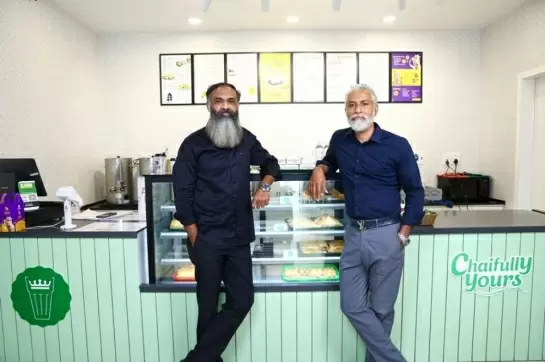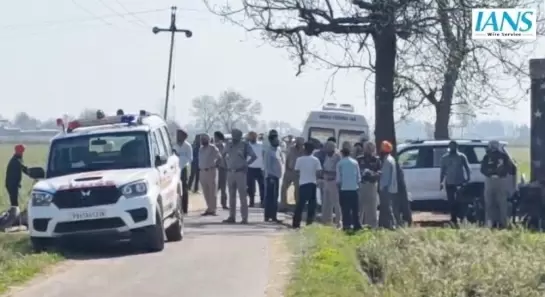Advocacy groups outline hurdles for disabled in India
23-October-2019
The recent humiliation of two disability rights activists at Kolkata airport has led to much hue and cry, but advocacy groups say such experiences are common with accessibility issues, non-implementation of laws and policies and lack of sensitisation of on-ground personnel still posing serious hurdles for the disabled in the country.
The facilities continue to be inadequate at public places such as railway stations and airports, or during train, road or air travel even over two years after the Rights of Persons with Disabilities Act, 2016, came into force following a two-decade long effort.
Organisations campaigning for the cause of the disabled feel it is high time the Central and state governments act with firmness as the country, as per the 2011 Census, has a huge 2.2 crore people with various forms of disability -- the largest in the world, and more than the current total population of neighbouring Sri Lanka.
"Unofficial estimates, however, put the figures at 5 crore," Shuvojit Moulik, founder of Civiiian Welfare Foundation, told IANS.
He said the main problem for the disabled in public places is accessibility.
"Take the case of the sightless, the largest category of disabled people in our country. There aren't many Braille sign ups for them in different cities, be it an important crossing or landmark.
"In Kolkata, when Metro Railway started in the 1980s, the authorities kept a particular area on the platform in every station elevated for the blind people. But now these areas have been blocked," said Moulik.
"In fact, the Kolkata Metro now doesn't have a single feature which is disabled friendly. On the contrary, Delhi Metro is accessible for the disabled, who can get in on a wheel chair," he said.
Similarly, at airports, though it is mandatory to have one person per airline with skills in sign language to help out the hearing impaired people, they are virtually non-existent.
On the contrary, people with artificial legs like the Jaipur Foot are often asked during security check why they are wearing them instead of using a wheelchair, said Moulik.
Shampa Sengupta, Director of the advocacy group Sruti Disability Rights Centre, was present at the Kolkata airport on Sunday when Kuhu Das, a polio survivor, was told to open her callipers by a woman CISF officer so that they could be put through the scanner.
When Das said she would have to take off her trousers for that, the officer called her colleague, who said they "have never encountered such a person".
A second incident took place in which a private airline was not allowing Jija Ghosh, who has cerebral palsy, to travel alone.
Ironically, the two activists, Sengupta and another colleague were bound for Delhi to attend an interaction on disability related issues.
After the incidents triggered protests, the airport authorities issued an unconditional public apology, promising to take up the matter strongly "with concerned teams".
"See, CISF is a security force trained under the Indian government. The said airlines is a private entity. But both behaved similarly because they didn't know how to handle persons with disability. That's because no training has been imparted, so the skills are not there.
"There should be regular orientation programmes for the CISF and all other groundstaff, as also for the plane crew," Sengupta told IANS.
Sengupta said the scenario was worse in railways, which was creating more barriers instead of making rail travel disabled friendly.
"They are supposed to give concession to the disabled people for rail travel. But they aren't accepting our identity cards. They are asking us to get new identity cards to avail the concession. They are also asking for disability certificates," she said.
Sengupta said many of the new trains didn't have any coach for the disabled, which is mandatory.
"Even if the coach is there, it is positioned at the rear, and not in the middle. It is very difficult for the disabled to board the coach. Sometimes it is not even on the platform, which in many stations is not that long," Sengupta said.
Other key problems were climbing the stairs in stations and using the toilets in trains.
"For instance, in long distance trains, how can a person who cannot move around get into the toilet on a wheelchair as the gate is so small," Sengupta asked.
As for public transport, there are only a few cities across India with low floor buses.
"In Kolkata, low floor buses are hardly seen on the road. But in Chennai and Delhi, there are a few low floor buses," she said.
Mouiik gave an instance of how facilities were getting wasted due to operational reasons.
"The West Bengal government has around 2,500 electric and air-conditioned buses which are supposed to be disabled friendly. There is supposed to be a lever which comes out from the second gate and goes out to the road, and any wheelchair can go through it.
"But the problem is that since it has never been used, none of the buses could actually open it. We have randomly tried on many buses. So the facility has actually become redundant," he said.
Moulik said one major hindrance for the creation of infrastructure is the "bare minimum" Budget allocation for the disability affairs department.
"It is not even comparable to other south Asian counties. If the government wants to change the infrastructure, it has to put in some amount of money to improve it," he said.
Moulik regretted that the Accessible India campaign launched by the Narendra Modi government fizzled out by 2017.
"Now you can only see the Accessible India campaign where they have different aids, like hearing aids or prosthetic legs, which they will give to some people, and that's it. I don't see the government pushing it through," Moulik added.IANS
Mumbai Police Bust High-Profile Sex Racket in Hiranandani Hotel
NPG Evaluates 8 Key Infrastructure Projects Under PM GatiShakti Plan
Rupee Symbol Debate Heats Up as Tamil Nadu Opts for ‘ரூ’
AIADMK Walks Out, BJP Boycotts Tamil Nadu Budget Session
AI Cybersecurity Startup Neural Defend Raises $600K in Pre-Seed Round









